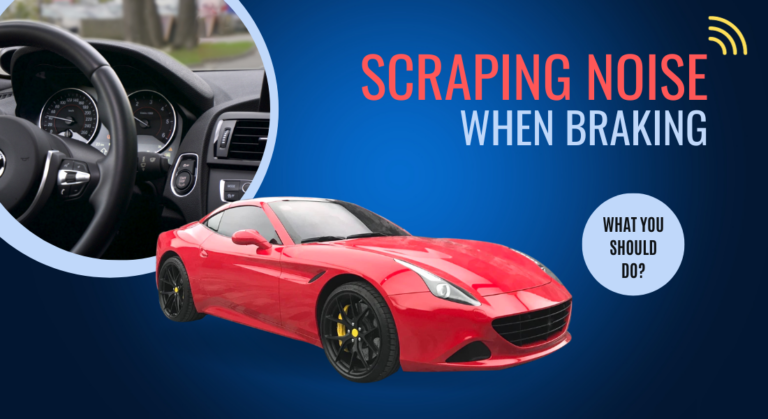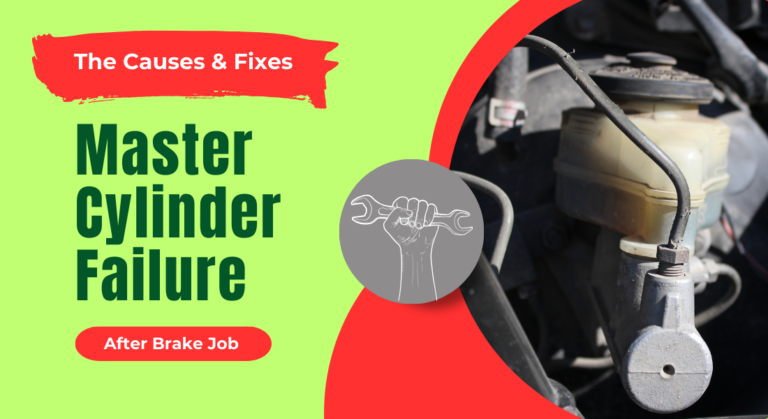New Brake Pads Tight on Rotor – How to Fix?
After replacing your brake pads, if you notice that they are excessively tight on the rotor, several factors contribute to the problem. Remember that brake pads should fit snugly against the rotor surface. So, are tight brake pads dangerous? How to fix new brake pads tight on rotor.
To fix new brake pads that are too tight on the rotor, ensure proper installation and alignment. Also, check caliper function, and address any sticking issues (like uneven rotor surfaces or caliper problems). Moreover make necessary adjustments to prevent constant contact between the pads and rotor.
However, uneven rotor conditions or problems with the piston or caliper can lead to an improper brake pad fit, disrupting its optimal performance.

How to Fix New Brake Pads Tight on Rotor?
It’s essential to fine-tune your brake pads appropriately for tip-top condition of your braking system. Below is a comprehensive guide on adjusting new brake pads:
Step 01: Inspect Brake Pad Evenness

Begin by carefully examining your vehicle’s brake system to verify that all components are correctly positioned. If, for example, the caliper is misaligned, it can exert uneven pressure on the pads, causing them to tighten.
Step 02: Verify Caliper Slide Functionality
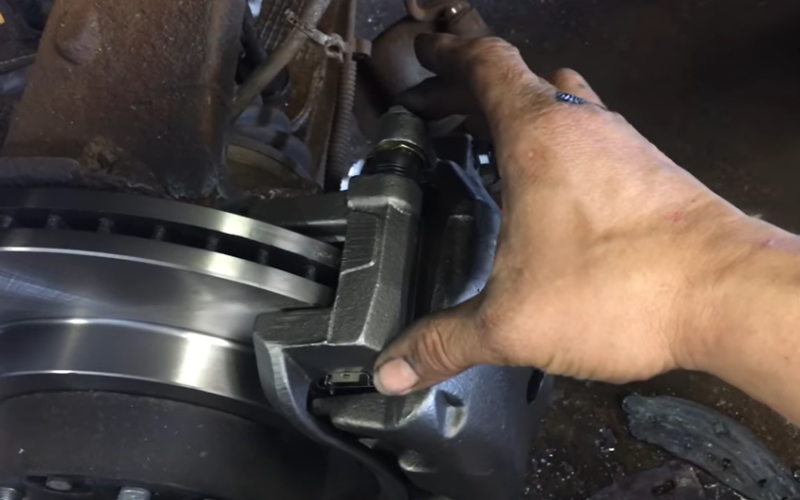
As mentioned, faulty caliper slides can lead to brake pads sticking to the rotor. Therefore, it’s prudent to ensure that the caliper slides function correctly to maintain peak performance. Periodically clean and lubricate the caliper slides to prevent them from seizing or rusting.
Step 03: Assess Brake Pad Quality
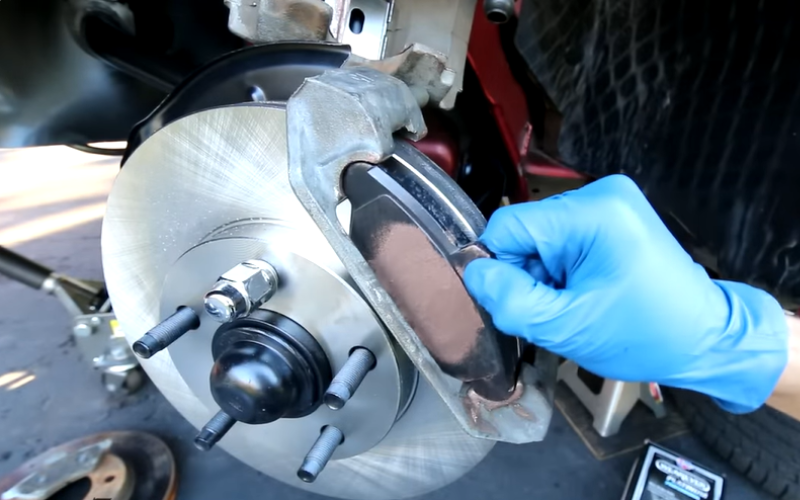
Occasionally, unscrupulous mechanics may use subpar brake pads to make a quick profit. Low-quality brake pads can compromise your vehicle’s braking efficiency.
If you suspect your new brake pads may be too tight, carefully inspect them to ensure they suit your vehicle. If they are not, seek the assistance of a certified professional to replace them.
Step 04: Confirm Rotor Size

Improperly sized rotors can lead to rotor-related issues in your vehicle. Verify that the rotors installed on your vehicle comply with the manufacturer’s specifications.
Step 05: Check Brake Fluid Pressure

Excessively high brake fluid pressure can cause brake pads to tighten. Therefore, inspecting your vehicle’s brake fluid pressure is advisable to ensure it is within the recommended range.
To guarantee proper pressure, consider having the brake system flushed by a qualified professional.
Step 06: Adjust the Caliper Piston

In some cases, the brake caliper piston may fail to retract fully, causing the brake pads to remain in close contact with the rotor. You can use specialized caliper tools to adjust the piston.
Step 07: Seek Professional Services

While DIY projects can save money, investing in a professional tune-up can yield long-term benefits. If the issue persists despite your efforts to address it, take your car to a certified mechanic for a comprehensive inspection. A professional can identify any underlying problems that require repair.
Step 08: Master the Break-In Process
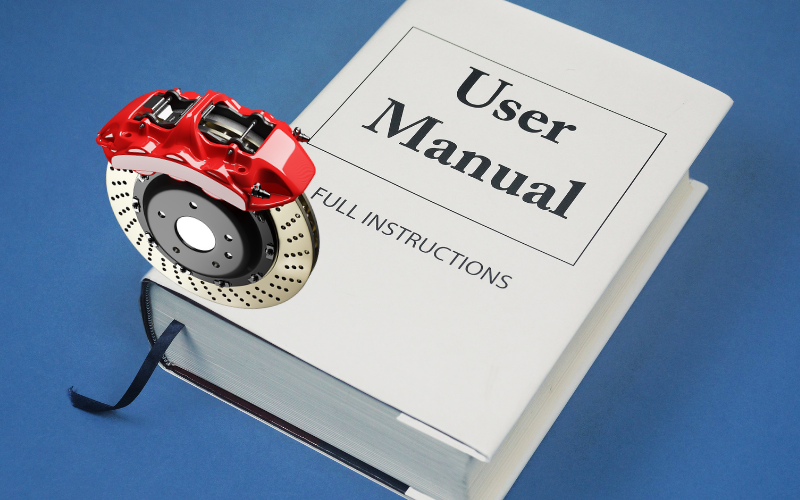
Brand-new brake pads require a break-in period to achieve optimal performance. If your brake pads are too tight, performing the break-in process can help eliminate squeaking noises and enhance braking power.
The specific break-in procedure may vary depending on the type of brake pads you use. So always follow the manufacturer’s instructions.
Read Also: Brake Pad Rubbing On Rotor While Driving – How To Fix?
Why Are My New Brake Pads Too Tight on Rotor?
There are several probable reasons why your brake pads might be too tight. These include:
Inappropriate or Low-Quality Brake Pads
Opting for cheap brake pads may initially save you money, but they may need to be a better fit or of sufficient quality for your vehicle. Using the right brake pads can result in better alignment, causing the brakes to become jammed against the rotor.
Incorrect Installation
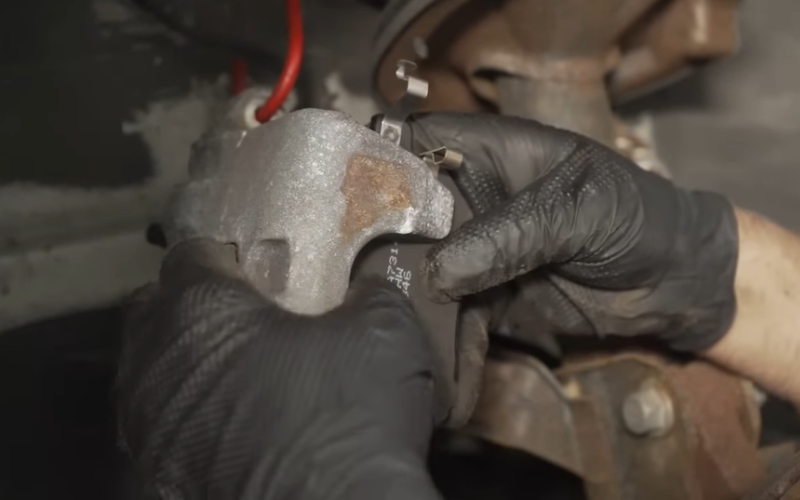
While choosing the most budget-friendly mechanic may be tempting, this decision can have long-term costs.
Brake pads can become overly tight due to installation errors. If your mechanic improperly installs the brake pads, they may become misaligned and clamp against the rotor. It is always advisable to adhere to the manufacturer’s instructions and use the appropriate tools during installation.
Excessive Heat
Heavy braking can sometimes be unavoidable, even if you’re a skilled driver. However, consistent heavy braking can generate excessive heat, potentially making brake pads too tight.
Stuck Brake Caliper Piston
A caliper piston is responsible for pressing the brake pad against the rotor in vehicles equipped with disc braking systems. If this piston becomes jammed during operation, the brake pad will remain in constant contact with the rotor, increasing the tightness.
Faulty Caliper Slides
Caliper slides play a crucial role in facilitating the smooth movement of the caliper piston, allowing it to conform to the rotor’s motion. If the caliper slides in your vehicle are defective, they may fail to retract properly, causing the brake pads to remain adhered to the rotor.
Read Also: Why Brakes Pulsating after New Rotors?(3 Reasons To Check)
How to Know if My New Brake Pads are Too Tight on Rotor
Machines tend to display signs and seek attention when they are not operating correctly. Here’s how your car will indicate that your brake pads are too tightly pressed against the rotor:
Resistance or Dragging While Driving
A smooth and effortless drive indicates that all components in your vehicle are functioning as they should. If you experience resistance or dragging while driving, it’s a cause for concern.
This may suggest that the brake pads are not disengaging from the rotors effectively, resulting in persistent friction.
Reduced Fuel Efficiency
The increased friction caused by dragging brake pads can create extra resistance on the wheels, decreasing fuel efficiency. This means that the fuel typically lasts for a certain distance and will cover a shorter distance.
Uneven Brake Pad Wear

Inspect your brake pads for irregular wear patterns. Uneven wear can indicate that the pads are not separating from the rotors correctly. Untimely wear due to uneven contact can reduce the efficiency of your brake system.
Overheating
The brake pads may bind or rub against the rotors during driving, potentially causing overheating.
You might notice a burning smell when your brakes overheat, and the braking system’s effectiveness could be compromised.
Screeching or High-Pitched Noise
When brake pads are excessively tight, they maintain constant contact with the rotors, even when you’re not applying the brakes.
Such a continuous contact can produce a high-pitched noise. While some noise is normal when new brake pads are breaking in, paying attention to the type of noise is crucial.
Persistent and loud screeching could signal a problem that requires professional inspection.
Excessive Brake Dust on Wheels
A small amount of brake dust on your wheels is usually acceptable because it indicates that the brakes are operating normally. However, an abundance of brake dust is a red flag.
Excessively tight brake pads can generate excessive brake dust due to continuous friction with the rotors. If you notice this incredibly shortly after replacing your brake pads, it could indicate an issue with your braking system that warrants attention.
Read Also: How Long Can You Drive with 2mm Brake Pads?(Avoid Risk)
FAQs
Is it safe to drive with new brake pads tight on the rotor?
Driving with new brake pads that are excessively tight on the rotor is not safe. It can lead to increased friction, reduced braking efficiency, overheating, and potential damage to the braking system. It’s essential to address this issue promptly by adjusting the brake pads to ensure safe and effective braking.
Should your car brake pads touch the rotors?
Yes, car brake pads should contact the rotors when you apply the brakes. This contact creates friction necessary for slowing down or stopping the vehicle. However, the contact should be controlled and not continuous; the pads should retract when you release the brake pedal to prevent constant friction and excessive wear.
Final Notes
Brake pads are designed to contact the rotor to generate friction when you apply the brake pedal for effective stopping.
Conversely, excessively tight brake pads can impede proper tire rotation, causing it to turn less than 1.5 rotations without a load. This can lead to diminished performance accelerating wear on brake drums and shoes, necessitating frequent replacements. So, learning how to fix new brake pads tight on rotor is vital.
Another concern with overly tight brake pads is the risk of overheating. Failure to release from the rotors during driving can cause brake overheating, posing a danger and potential brake and rotor damage. Overheating can warp the rotors in the mildest case, impairing the flat surface needed for effective brake pad grip and stopping the vehicle.

Meet Zayan, the mechanical genius behind the highly acclaimed brakes problems and solutions website. With over a decade of hands-on experience in the automotive industry, Zayan has become a trusted authority in the realm of brake systems.
His passion for cars, coupled with his expertise in solving complex brake-related issues, has earned him a devoted following of car enthusiasts, mechanics, and everyday drivers seeking reliable guidance.



